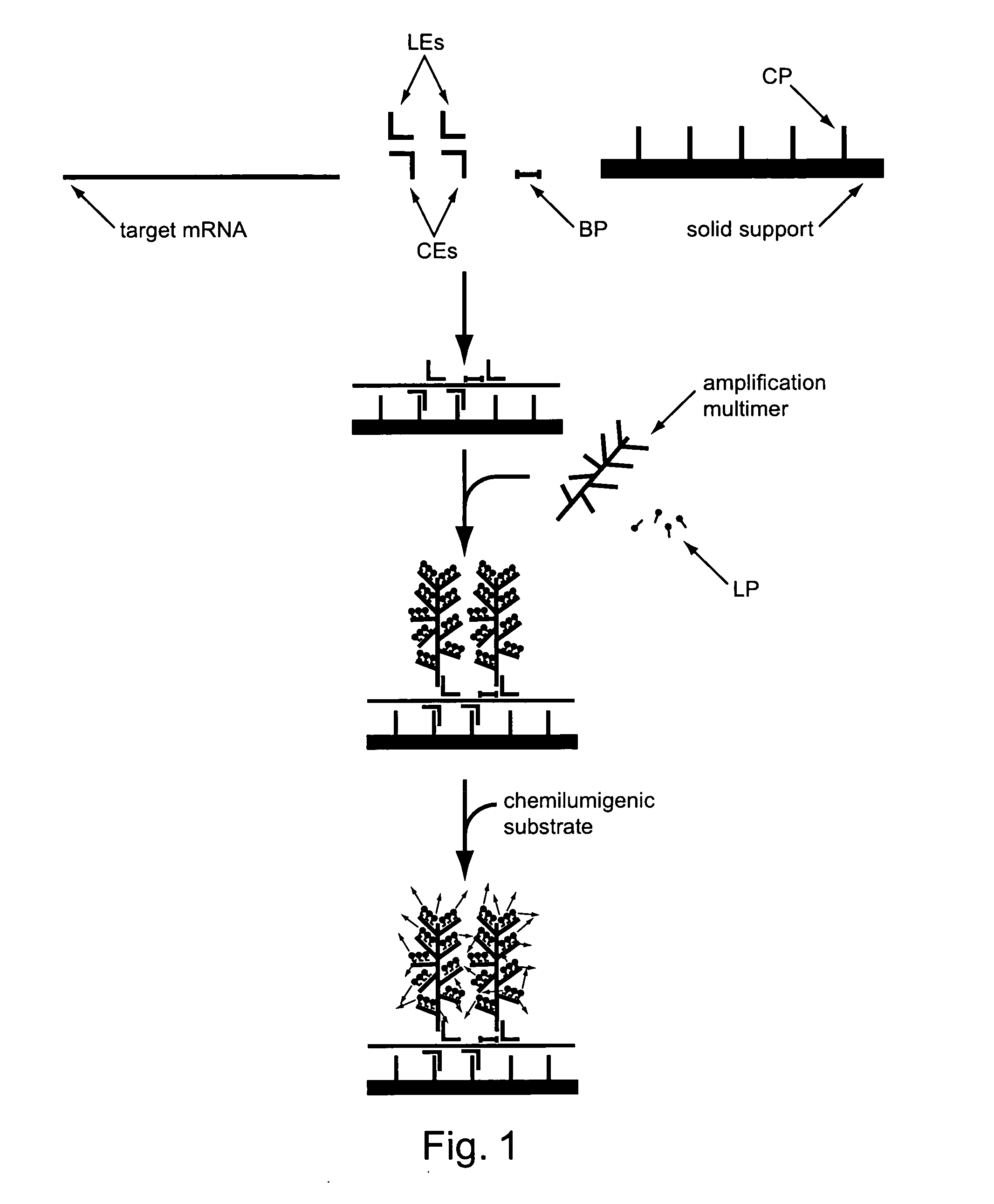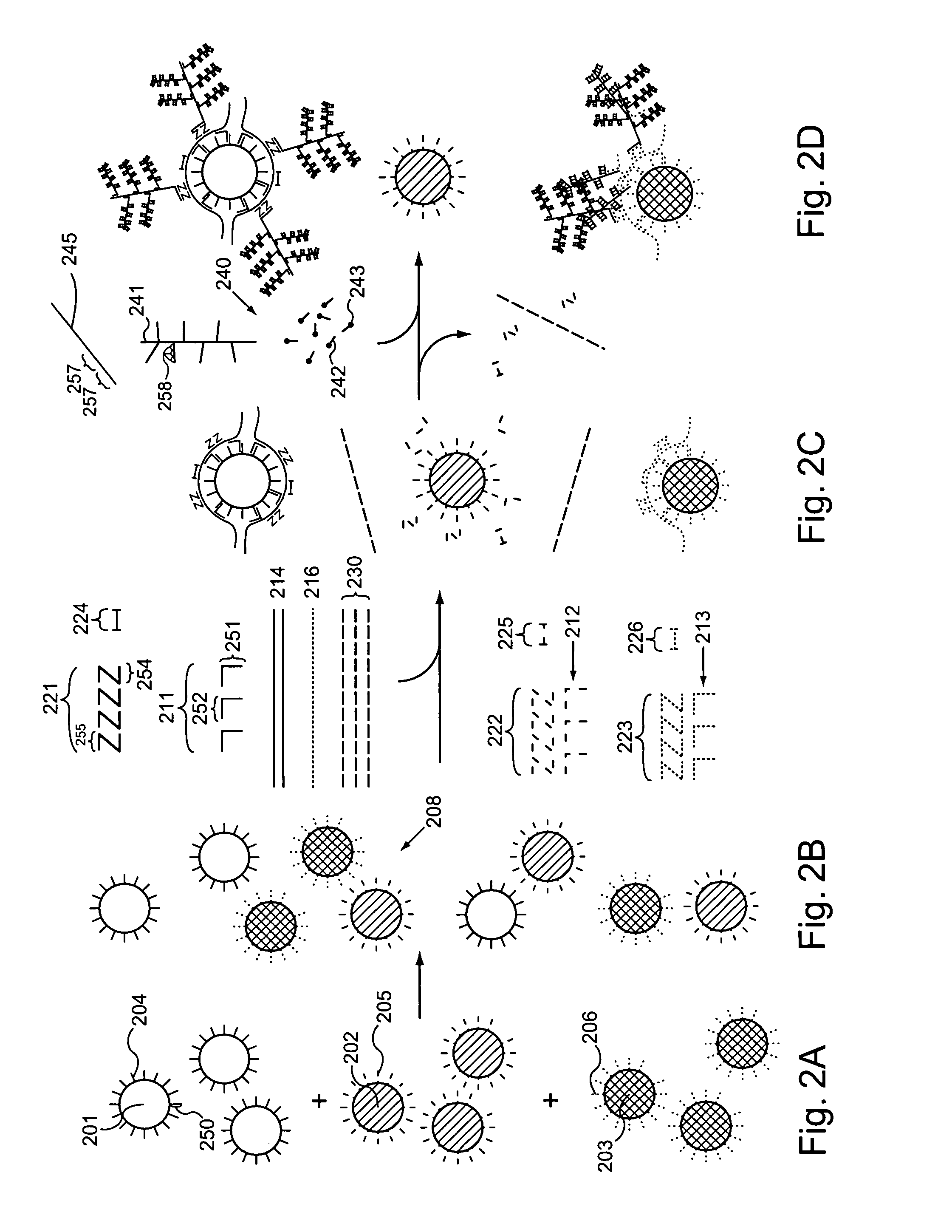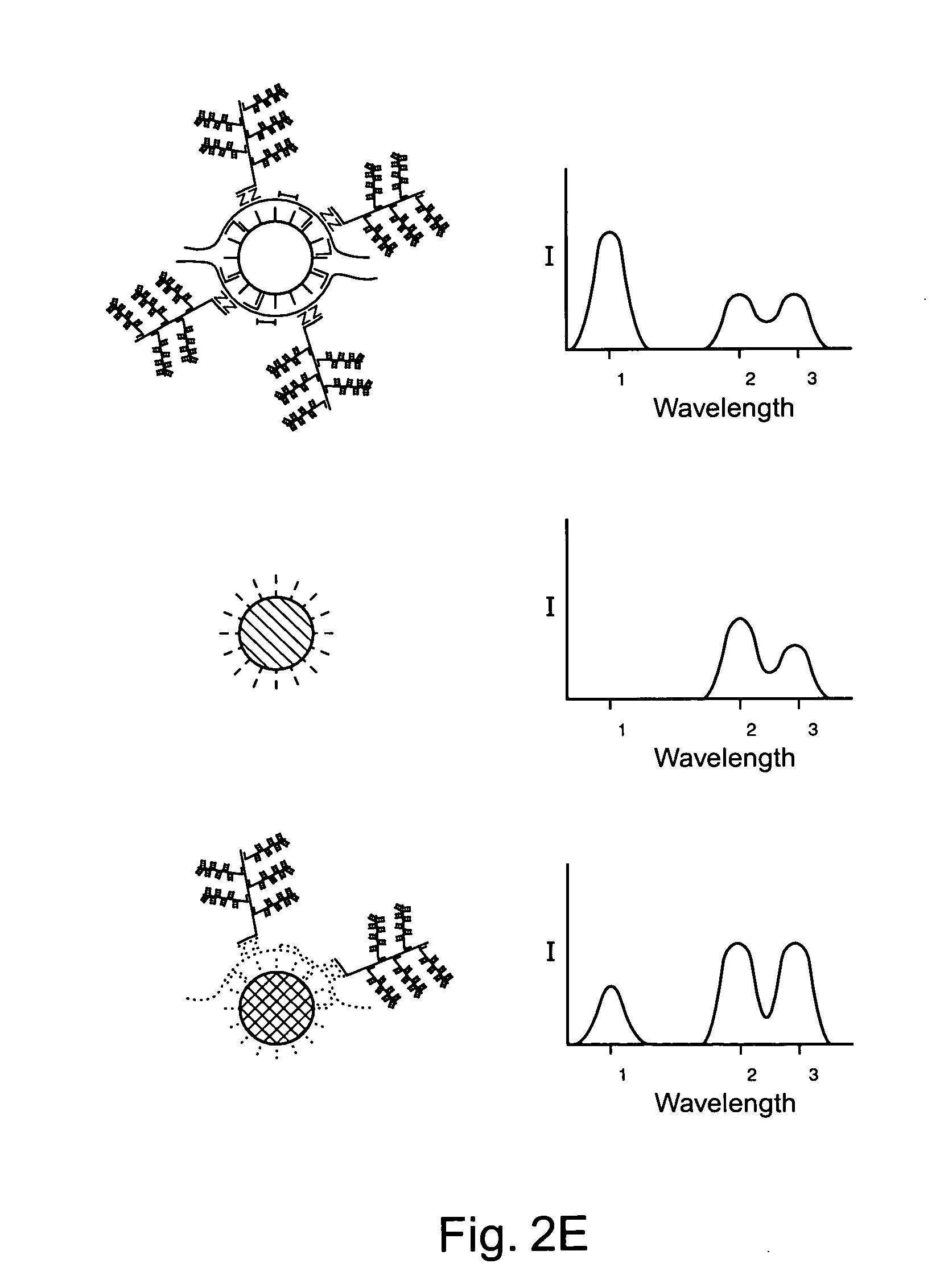Multiplex detection of nucleic acids
a nucleic acid and multi-component technology, applied in the field of nucleic acid detection, can solve the problems of limited assay sensitivity, low overall assay precision, limited assay sensitivity and reproducibility,
- Summary
- Abstract
- Description
- Claims
- Application Information
AI Technical Summary
Benefits of technology
Problems solved by technology
Method used
Image
Examples
examples
[0177] It is understood that the examples and embodiments described herein are for illustrative purposes only and that various modifications or changes in light thereof will be suggested to persons skilled in the art and are to be included within the spirit and purview of this application and scope of the appended claims. Accordingly, the following examples are offered to illustrate, but not to limit, the claimed invention.
[0178] The following sets forth a series of experiments that illustrate label extender design and that demonstrate that a configuration in which the 5′ ends of the label extenders hybridize to a nucleic acid of interest while the 3′ ends of the label extenders hybridize to a preamplifier results in stronger binding of the preamplifier to the nucleic acid than does a cruciform arrangement of the label extenders.
[0179] Two subsets of label extenders were designed to bind to a human GAPD nucleic acid target and to a preamplifier, as schematically illustrated in FIG...
PUM
| Property | Measurement | Unit |
|---|---|---|
| Temperature | aaaaa | aaaaa |
| Temperature | aaaaa | aaaaa |
| Temperature | aaaaa | aaaaa |
Abstract
Description
Claims
Application Information
 Login to View More
Login to View More - R&D
- Intellectual Property
- Life Sciences
- Materials
- Tech Scout
- Unparalleled Data Quality
- Higher Quality Content
- 60% Fewer Hallucinations
Browse by: Latest US Patents, China's latest patents, Technical Efficacy Thesaurus, Application Domain, Technology Topic, Popular Technical Reports.
© 2025 PatSnap. All rights reserved.Legal|Privacy policy|Modern Slavery Act Transparency Statement|Sitemap|About US| Contact US: help@patsnap.com



